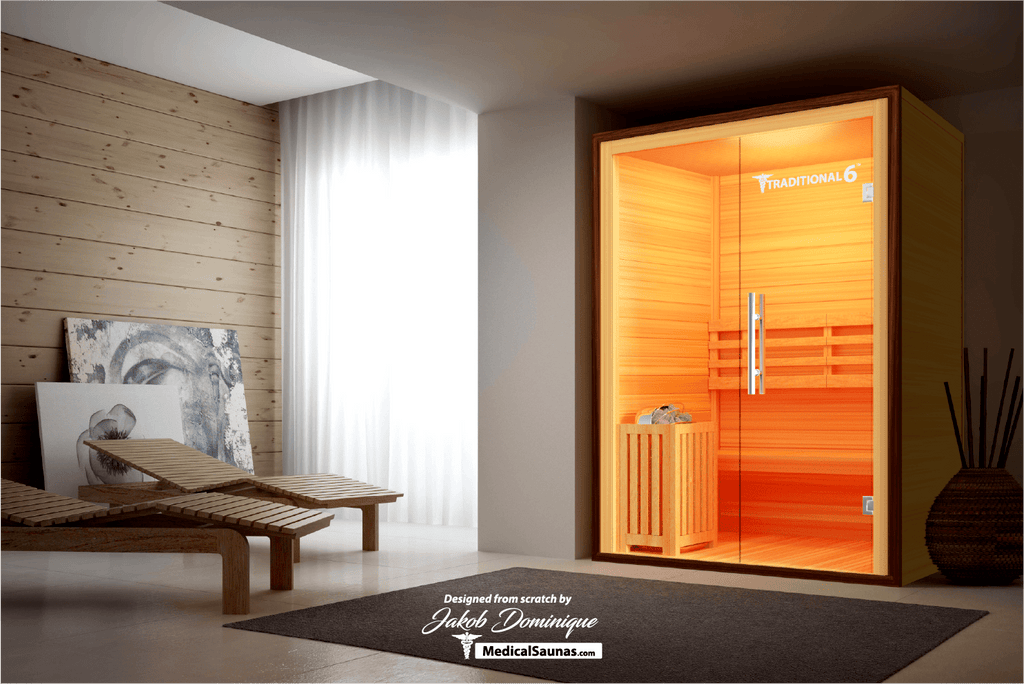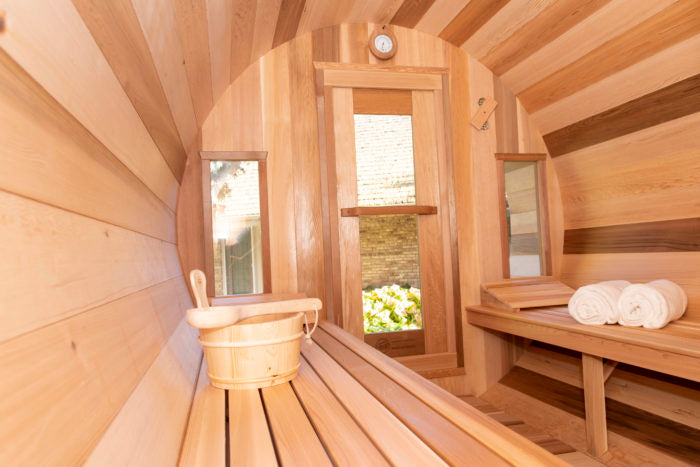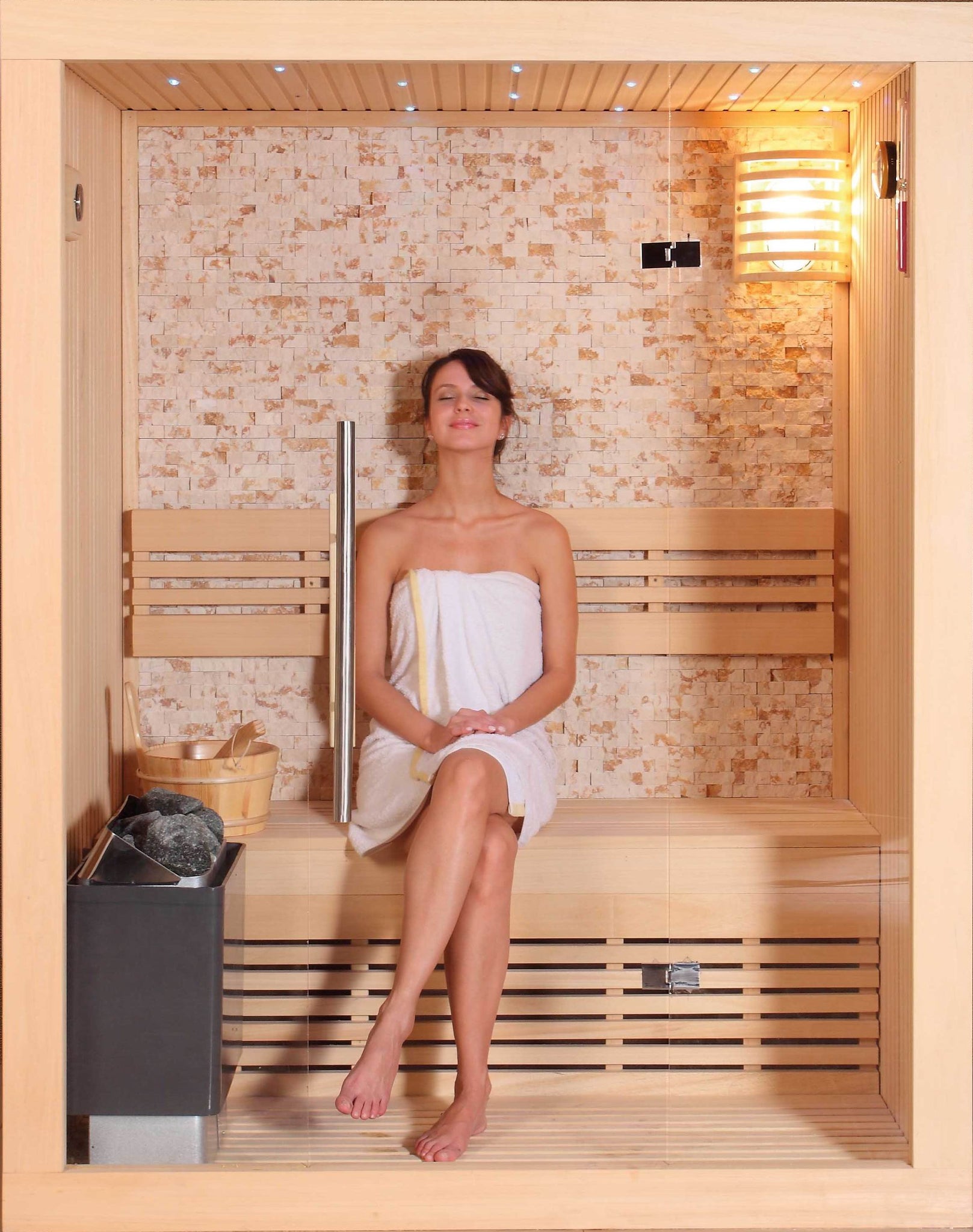The Buzz on Traditional Sauna
The Buzz on Traditional Sauna
Blog Article
The 9-Minute Rule for Traditional Sauna
Table of ContentsTraditional Sauna - An OverviewTraditional Sauna Fundamentals Explained7 Easy Facts About Traditional Sauna DescribedWhat Does Traditional Sauna Mean?Traditional Sauna Can Be Fun For Anyone
Many of the weight lost in a sauna is water loss and is re-gained upon rehydrating. However, certainly sauna can be a crucial component of a healthy and balanced weight reduction program. To check out the distinctions in between standard and IR saunas, I will separate these right into verifiable, theoretical, and made distinctions.Hence, the best point in the saunawhich is at the ceiling directly above the sauna heateris typically between 185 and 190 F. Claims that a typical sauna exceeds 200 F is just not real and not relevant for electric saunas sold in the US. The temperature level for a far-infrared sauna is usually established in between 120 and 140 F; nevertheless, unlike the typical sauna, the objective in and IR room is not to accomplish a high temperature level.
Due to this, the temperature distinction is almost unnecessary, since extreme sweating causes both sauna kinds, but the approach of heating up the body is various. In an IR sauna the bather will certainly feel hot and will certainly sweat profusely, yet at much lower temperature levels (Traditional Sauna). Hence, if the objective is to invest longer amount of times in the sauna, the IR sauna is an excellent option
When a traditional sauna has actually been effectively warmed, the sauna walls are warm, the air temperature has achieved established temperature level and the rocks are incredibly heated. As a fascinating side note, the heated wall surfaces and the rocks are sending out far-infrared warm, combined with the warmed air, to develop an "wrapping up warm".
Rumored Buzz on Traditional Sauna

When the heat is attained, the elements cycle on and off to keep the high temperature level. Most traditional sauna customers enjoy putting water over the rocks to produce steam to increase sauna humidity levels. The advantages of putting water over the rocks consist of: making the room more comfortable, dampening the nasal flows, and enabling the usage of aromatherapy by blending essential oils with the water.

When the energy goes into the body, it causes the body temperature to enhance and inevitably causes perspiration. In an infrared sauna it is essential for the emitters/heaters to stay on practically regularly. Since there is no mass of rocks to preserve heat, the sauna will certainly cool down if the emitters closed off.
As stated over, the sauna i was reading this bather in an infrared room intends to place himself before running emitters to get maximum take advantage of the warmth. The home heating time for the 2 rooms can be really different, depending upon just how the rooms click over here are made use of. For a traditional sauna, a bather must allow 30-40 mins for the room to achieve a desired temperature level and to correctly pre-heat the rocks.
The Best Guide To Traditional Sauna
A well constructed sauna will generally achieve a temperature level of 150-160 F in about 30-40 minutes. For hotter temperatures, the room might require to warm for a longer period.

Traditional saunas tend to be larger (for this reason use more electrical energy) than infrared saunas, although typical saunas are definitely offered in one and two person dimensions. For a two-person traditional sauna, 5x6 or 5x7 dimension is most prominent. The top bench can easily seat 2 or three people and is also enough time to lie down throughout the sauna session.
The Ultimate Guide To Traditional Sauna
The ordinary expense per kWH of electrical power in the united state is approximately $0.11, so a 4.5 kW heating unit will certainly set you back around $.50 to compete one hour, if the heating unit runs continually for one hour. Typically a sauna heater will run for 75% of the initial hour and 50% of subsequent hours on considering that the components cycle once the set temperature is attained.

Lastly, there is a hardly ever talked about distinction in the social experience between the two spaces. While our culture has actually lost some of the social advantage of the traditional sauna experience, it can be really socially gratifying (Traditional Sauna). From household time in the sauna, to heart-felt wikipedia reference conversations with substantial others, to sauna partiesthe standard sauna experience can bring about intimate socializing
The Basic Principles Of Traditional Sauna
Many higher end infrared spaces consist of tinted light therapy, noise systems and full-glass fronts.
Report this page